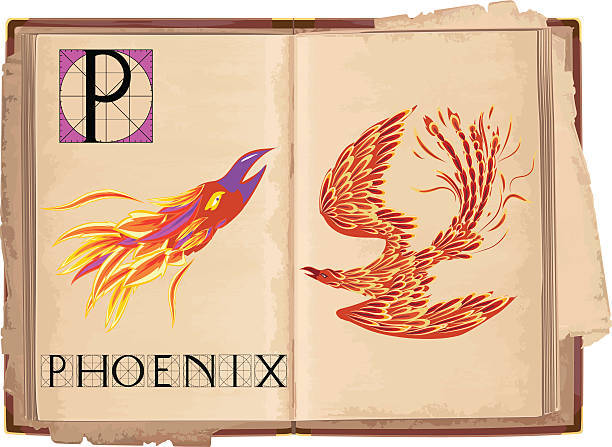The Phoenix is a legendary bird found in many cultures and myths around the world, widely known as a symbol of rebirth and immortality. With its glorious appearance and ability to rise from flames, the Phoenix has been the source of many stories and symbolic meanings from ancient times to the present day. In this article, we take a closer look at the symbolism, origins, and stories of the Phoenix in each culture.

Phoenix symbolismThe Phoenix is primarily a symbol of rebirth, resurrection, and immortality. According to the most widely known legends, the Phoenix is a bird with a very long life span, usually between 500 and 1000 years. At the end of its life, the Phoenix will burst into flames in its nest, burn to ashes, and then a new Phoenix will be born from the ashes and live again. This cycle continues forever, which is why the Phoenix is a symbol of immortality.Additionally, the phoenix symbolizes our ability to overcome and rise again in the face of life’s difficulties and challenges, and this symbolism has led to the phoenix being used as a symbol of spiritual renewal and hope in many cultures.The origins of the PhoenixThere are many theories about the origin of the Phoenix, but ancient Egyptian and Greek mythology are considered the oldest sources of Phoenix legend.Bennu in Ancient Egypt In ancient Egypt, the sacred bird Bennu, which resembled the phoenix, was worshiped. Bennu was closely related to the sun god Ra and was worshiped as a symbol of rebirth and the solar cycle. Bennu was also a symbol of the flood of the Nile and the subsequent fertility, and was considered to symbolize the rebirth of life.Phoenix in Greek Mythology In Greek mythology, the Phoenix is depicted as a bird that symbolizes fire and rebirth, as its name suggests. The ancient Greeks believed that the Phoenix would jump into the flames in a spirit of self-sacrifice to gain new life, and made it a symbol of immortality. The Greek poet Herodotus wrote about the Phoenix, praising its beauty and unique cycle of rebirth.The Phoenix in CulturesThe legend of the Phoenix has influenced many cultures, not just Egypt and Greece, and each culture has its own interpretation and stories.Chinese Phoenix (Fenghuang, Fenghuang) In China, the Phoenix is known as “Fenghuang” and is one of the most important divine beasts, along with the dragon. Usually depicted in pairs, a female “Huang” and a male “Feng”, the Phoenix is a symbol of harmony, prosperity and the Empress. The Phoenix is also a symbol of peace and virtue, and was often used in decorations associated with royalty and the nobility. In Chinese culture, the Phoenix is often seen as an auspicious omen and a sign of peace.Japanese Phoenix (Fushicho) In Japan, the phoenix is also known as the “phoenix” and has been used as a symbol, especially in the context of Buddhism and Shintoism. In Japan, the phoenix is often depicted as a symbol of peace, virtue and harmony, appearing in the decoration of temples and shrines, as well as in traditional artwork. In Japanese legend, the phoenix appears in times of peace and disappears in times of unrest and war.Phoenix in Middle Eastern and Islamic Cultures In the Middle East, there is a legendary bird called “Anka” that resembles the Phoenix. It is also a very long-lived bird that lives for centuries and will appear at a certain point when the world is in turmoil. In Islamic culture, the story of the Phoenix’s rebirth is often interpreted as a symbol of the permanence of life and the will of God.In Western culture, the image of the phoenix has also been adopted by Christianity and is sometimes associated with the resurrection of Jesus Christ. The phoenix’s resurrection from death is sometimes interpreted as a symbol of Christian resurrection, and it was frequently featured in medieval Christian art and literature. During the Renaissance, the phoenix was also used as a symbol of spiritual rebirth and the arrival of a new era.conclusionThe Phoenix has played an important role in many cultures, from ancient times to the present day, as a symbol of rebirth and immortality. Its legends and symbols are deeply rooted in many cultures, including Egyptian, Greek, Chinese, Japanese and Western, and are interpreted differently within each culture. Stories of the Phoenix continue to be told to this day as it symbolizes the cycle of life and resurrection from trials, indicating hope and new beginnings for people.
